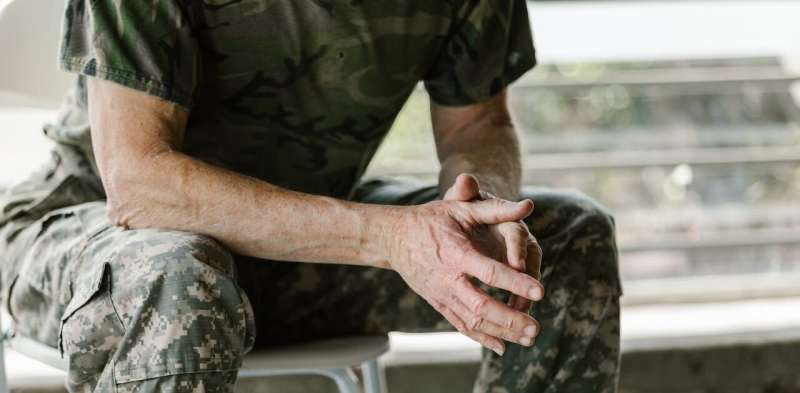
Suicide is a complex issue that impacts 425,000 Australians every year. That’s because up to 135 people are directly or indirectly impacted by each suicide death.
Military and emergency services personnel (such as those in the police force, fire and rescue services, and paramedics), have higher rates of suicidal thoughts, attempts, and deaths than the general Australian public. This may be because they experience repeated traumatic events and are at risk of workplace harassment and bullying.
Between January 2001 and December 2016, there were a recorded 197 suicide deaths of current or former emergency services personnel—an average of one emergency services personnel member dying every month.
Meanwhile, there were 1,600 deaths by suicide among veterans in Australia between 1997 and 2020. This equates to an average of more than one veteran dying by suicide every single week. Yet there is little understanding and limited support for their families.
The ripple effect
Children who have a parent who die by suicide are three times more likely to die by suicide than their peers.
Similarly, adults bereaved by suicide, even outside of their family, are more likely to attempt suicide themselves.
However, providing resources and support to those impacted by a suicide death can lower the risks.
The families and coworkers of military and emergency service personnel who die by suicide represent a unique group with specific needs. The loss of their loved one which may not be addressed by generic or civilian resources and services.
For example, families and peers are often left feeling conflicted about how they talk about their loved one’s job. How do they acknowledge the great work their loved one has done in their career, while also knowing that career contributed to their death?
Another issue is access to adequate social support, which can decrease grief difficulties, depression symptoms, and suicidal thoughts after a suicide. Service families may have moved a long way—interstate or even internationally—as part of supporting the personnel member’s role. This means families may have limited social support available to them, and little to no systems in place for family care.
With such a high level of impact and risk, you might assume there are policies, safeguards, and systems in place to support families and peers in the event of a serving personnel member dying by suicide. But this is not the case.
The interim report from the Royal Commission into Veterans Suicide acknowledged a lack of understanding of the impact of deaths by suicide on families and colleagues, and that the availability and accessibility of the support was too limited.
There is a need to better understand and support families and peers of both military and emergency service workers when a service member dies by suicide.
A starting point
Military and Emergency Services Health Australia have begun the process of developing a national framework for supporting the bereaved families and coworkers of defense and emergency services personnel who have died by suicide, informed by lived experience.
We mapped all available grief and bereavement services who may offer support after suicide or offer support to defense or emergency services personnel and their families. We wanted to find out who, if anyone, was supporting families or coworkers in Australia when a current or former serving military member or first responder dies by suicide.
We identified 16 service providers supporting people after suicide for the general public. StandBy Support After Suicide helps individuals, families, friends and witnesses and is the most accessible provider. Six providers were identified as supporting service personnel even though they didn’t have specific suicide bereavement services. Only one service—Open Arms, a defense force-affiliated organization—offers specific support for the families and peers of military personnel when someone dies by suicide.
For first responders as there is no service within Australia offering specific assistance to families or peers in the event of a worker’s suicide. The closest service available is offered by Fortem Australia, who provide first responder counseling services, though these are not specific to suicide bereavement.
Building connections
Despite this lack of specific services, the civilian services currently available were open learning how they could offer better support. For some, this was about finding cultural training for staff. For others, like StandBy Suicide Support, it could mean modifying existing resources to be for military and first responder workers and their family.
Every community-based organization we made contact with expressed interest in offering this support.
MESHA will be working with the families, peers and co-workers of services personnel who have died by suicide, alongside a needs assessment of the service providers who offer grief and bereavement support after suicide, to better understand the specific requirements for this population.
However, despite the encouraging responses from service providers, conscious efforts by federal and state governments will be needed to supply funding to these services.
Henry Bowen, The Conversation

